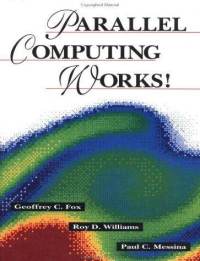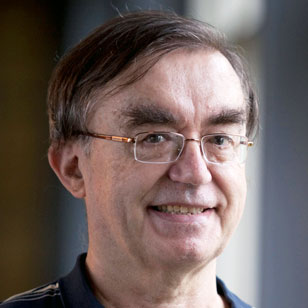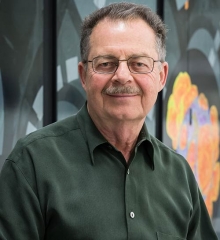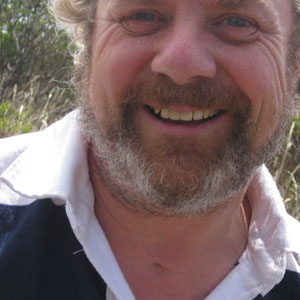
Parallel Computing Works!
A clear illustration of how parallel computers can be successfully applied to large-scale scientific computations. Investigates issues of fine-grained parallelism relevant for future supercomputers with particular emphasis on hypercube architecture.
Tag(s): Parallel Computing
Publication date: 01 May 1994
ISBN-10: 1558602534
ISBN-13: 1558602534
Paperback: 977 pages
Views: 22,686
Parallel Computing Works!
 A clear illustration of how parallel computers can be successfully applied to large-scale scientific computations. Investigates issues of fine-grained parallelism relevant for future supercomputers with particular emphasis on hypercube architecture.
A clear illustration of how parallel computers can be successfully applied to large-scale scientific computations. Investigates issues of fine-grained parallelism relevant for future supercomputers with particular emphasis on hypercube architecture.
Tag(s):
Parallel Computing
Publication date: 01 May 1994
ISBN-10: 1558602534
ISBN-13: 1558602534
Paperback: 977 pages
Views: 22,686
Document Type: N/A
Publisher: Morgan Kaufmann Publishers
License: n/a
Post time: 06 Mar 2007 09:29:36
Publication date: 01 May 1994
ISBN-10: 1558602534
ISBN-13: 1558602534
Paperback: 977 pages
Views: 22,686
Document Type: N/A
Publisher: Morgan Kaufmann Publishers
License: n/a
Post time: 06 Mar 2007 09:29:36
Book Summary:
This book describes the activities of the Caltech Concurrent Computation Program (C3P). This was a seven-year project (1983-1990), focussed on the question, "Can parallel computers be used effectively for large scale scientific computation?" The title of the book, "Parallel Computing Works," reveals our belief that we answered the question in the affirmative, by implementing numerous scientific applications on real parallel computers and doing computations that produced new scientific results. In the process of doing so, C3P helped design and build several new computers, designed and implemented basic system software, developed algorithms for frequently used mathematical computations on massively parallel machines, devised performance models and measured the performance of many computers, and created a high-performance computing facility based exclusively on parallel computers. While the initial focus of C3P was the hypercube architecture developed by C. Seitz at Caltech, many of the methods developed and lessons learned have been applied successfully on other massively parallel architectures.
Of course, C3P was only one of many projects contributing to this field and so the contents of this book are only representative of the important activities in parallel computing during the last ten years. However, we believe that the project did address a wide range of issues and applications areas. Thus, a book focussed on C3P has some general interest. We do, of course, cite other activities but surely not completely.
C3P was both a technical and social experiment. It involved a wide range of disciplines working together to understand the hardware, software, and algorithmic (applications) issues in parallel computing. Such multidisciplinary activities are generally considered of growing relevance to many new academic and research activities-including the federal high-performance computing and communication initiative. Many of the participants of C3P are no longer at Caltech, and this has positive and negative messages. C3P was not set up in a traditional academic fashion since its core interdisciplinary field, computational science, is not well understood or implemented either nationally or in specific universities. This is explored further in Chapter 20. C3P has led to flourishing follow-on projects at Caltech, Syracuse University, and elsewhere. These differ from C3P just as parallel computing has changed from an exploratory field to one that is in a transitional stage into development, production, and exploitation.
This book describes the activities of the Caltech Concurrent Computation Program (C3P). This was a seven-year project (1983-1990), focussed on the question, "Can parallel computers be used effectively for large scale scientific computation?" The title of the book, "Parallel Computing Works," reveals our belief that we answered the question in the affirmative, by implementing numerous scientific applications on real parallel computers and doing computations that produced new scientific results. In the process of doing so, C3P helped design and build several new computers, designed and implemented basic system software, developed algorithms for frequently used mathematical computations on massively parallel machines, devised performance models and measured the performance of many computers, and created a high-performance computing facility based exclusively on parallel computers. While the initial focus of C3P was the hypercube architecture developed by C. Seitz at Caltech, many of the methods developed and lessons learned have been applied successfully on other massively parallel architectures.
Of course, C3P was only one of many projects contributing to this field and so the contents of this book are only representative of the important activities in parallel computing during the last ten years. However, we believe that the project did address a wide range of issues and applications areas. Thus, a book focussed on C3P has some general interest. We do, of course, cite other activities but surely not completely.
C3P was both a technical and social experiment. It involved a wide range of disciplines working together to understand the hardware, software, and algorithmic (applications) issues in parallel computing. Such multidisciplinary activities are generally considered of growing relevance to many new academic and research activities-including the federal high-performance computing and communication initiative. Many of the participants of C3P are no longer at Caltech, and this has positive and negative messages. C3P was not set up in a traditional academic fashion since its core interdisciplinary field, computational science, is not well understood or implemented either nationally or in specific universities. This is explored further in Chapter 20. C3P has led to flourishing follow-on projects at Caltech, Syracuse University, and elsewhere. These differ from C3P just as parallel computing has changed from an exploratory field to one that is in a transitional stage into development, production, and exploitation.
Tweet
About The Author(s)
No information is available for this author.
No information is available for this author.
No information is available for this author.
Book Categories
Computer Science
Introduction to Computer Science
Introduction to Computer Programming
Algorithms and Data Structures
Artificial Intelligence
Computer Vision
Machine Learning
Neural Networks
Game Development and Multimedia
Data Communication and Networks
Coding Theory
Computer Security
Information Security
Cryptography
Information Theory
Computer Organization and Architecture
Operating Systems
Image Processing
Parallel Computing
Concurrent Programming
Relational Database
Document-oriented Database
Data Mining
Big Data
Data Science
Digital Libraries
Compiler Design and Construction
Functional Programming
Logic Programming
Object Oriented Programming
Formal Methods
Software Engineering
Agile Software Development
Information Systems
Geographic Information System (GIS)
Mathematics
Mathematics
Algebra
Abstract Algebra
Linear Algebra
Number Theory
Numerical Methods
Precalculus
Calculus
Differential Equations
Category Theory
Proofs
Discrete Mathematics
Theory of Computation
Graph Theory
Real Analysis
Complex Analysis
Probability
Statistics
Game Theory
Queueing Theory
Operations Research
Computer Aided Mathematics
Supporting Fields
Web Design and Development
Mobile App Design and Development
System Administration
Cloud Computing
Electric Circuits
Embedded System
Signal Processing
Integration and Automation
Network Science
Project Management
Operating System
Programming/Scripting
Ada
Assembly
C / C++
Common Lisp
Forth
Java
JavaScript
Lua
Rexx
Microsoft .NET
Perl
PHP
R
Python
Rebol
Ruby
Scheme
Tcl/Tk
Miscellaneous
Sponsors


